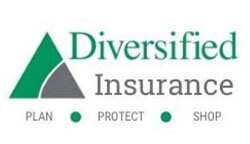How Does Permanent Life Insurance Work? A Simple Guide
Table of Contents
How Does Permanent Life Insurance Work? A Simple Guide
Unlike term life insurance which expires after a set period, permanent life insurance can work as a lifelong financial tool that combines death benefits with wealth-building features. While many people understand basic life insurance, permanent life insurance works differently by offering both protection for your loved ones and a cash value component that grows over time.
This extensive guide explains how permanent life insurance works, from its unique dual benefits to the various types available. You’ll learn about cash value growth, accessing your money through loans or withdrawals, and important policy features that can enhance your coverage. Whether you’re a first-time buyer or looking to upgrade your existing coverage, this information will help you make an informed decision about permanent life insurance.
What Makes Permanent Life Insurance Different
Permanent life insurance stands apart from other insurance types due to several distinct features that make it a unique financial instrument. As opposed to temporary coverage options, these policies offer a combination of protection and investment components that work together throughout your lifetime.
Lifetime coverage vs. term policies
Permanent life insurance, as the name suggests, provides coverage for your entire life, never expiring as long as you continue paying premiums. In contrast, term life insurance only covers you for a specific period—typically 10, 20, or 30 years—after which the policy ends.
Think of term life insurance as renting an apartment, whereas permanent life insurance is more like buying a home that you plan to keep for the rest of your life. This fundamental difference means that with permanent insurance, your beneficiaries will receive the death benefit regardless of when you pass away, even if you live to 100 years old.
Moreover, the death benefit amount typically remains stable throughout the life of the policy, offering predictable protection that your family can count on. This lifelong guarantee provides peace of mind that temporary policies simply cannot match.
The dual benefits: protection and cash value
Perhaps the most significant distinction of permanent life insurance is its dual-purpose design. Beyond providing a death benefit to protect your loved ones, these policies build cash value over time—an asset that grows during your lifetime.
When you pay your premium, it gets divided into three portions: one pays for the death benefit, another covers the insurer’s costs and profits, and the third contributes to your policy’s cash value. This cash value component grows tax-deferred, meaning you won’t pay taxes on the accumulated earnings until you withdraw them.
This built-in savings mechanism creates a financial resource you can tap into while you’re still alive. You can:
- Take out policy loans at rates lower than what banks typically offer
- Use it to pay premiums in later years
- Create an investment portfolio for wealth accumulation
- Supplement your retirement income
Additionally, as your cash value increases, the insurance company’s risk decreases because this accumulated value offsets part of the insurer’s liability. This creates a mutually beneficial arrangement that grows more valuable with time.
Higher premiums with long-term advantages
Certainly, permanent life insurance comes with higher premium costs than term policies. This price difference reflects the additional benefits and lifelong coverage these policies provide. Nevertheless, these higher premiums can translate into long-term advantages that may outweigh the initial costs.
With whole-life policies—the most common type of permanent insurance—your premium payments are locked in at purchase and guaranteed never to increase. Although starting out more expensive than term insurance, the predictable nature of these costs combined with the accumulating cash value can make whole life a better long-term value.
Furthermore, in the early years of your policy, a larger portion of your premium goes toward building cash value. Over time, as the cost of insuring your life increases with age, more of your premium shifts toward covering the insurance component. This structured approach allows your cash value to grow quickly in the early years, potentially creating a substantial asset over time.
The cash value component also serves important financial purposes beyond basic protection. It can fund buy-sell agreements between business partners, provide liquidity for estate planning, offer tax-efficient wealth transfer methods, or create a financial safety net for dependents with special needs. These versatile applications make permanent life insurance a valuable tool in comprehensive financial planning.
How the Cash Value Component Works
The cash value feature of permanent life insurance serves as a powerful financial tool that evolves throughout the policy’s lifetime. This unique component functions as a savings account within your policy, creating a resource you can access while still alive.
Building equity over time
Cash value accumulation begins with your premium payments, which get divided into three distinct portions. One part covers the death benefit, another goes toward the insurer’s costs and profits, and the third contributes directly to your policy’s cash value account. This systematic approach creates a growing financial asset within your insurance policy.
Initially, during the early years of your policy, a higher percentage of your premium goes toward building cash value. This allocation strategy allows your cash value to grow more quickly at first. However, as you age, the cost of insuring your life naturally increases, so more of your premium shifts toward covering the insurance component.
How quickly your cash value grows depends largely on the type of policy you own:
- Whole life insurance: Cash value grows at a fixed rate guaranteed by the insurer
- Universal life insurance: Cash value grows based on changing interest rates and investments
- Variable life insurance: Cash value can be invested in portfolio options similar to mutual funds
Notably, your cash value builds consistently as long as you continue paying premiums. Each payment adds to this growing pool of money, creating a financial resource that increases your policy’s overall value.
Tax-deferred growth explained
One significant advantage of permanent life insurance is that your cash value grows on a tax-deferred basis. Simply put, you don’t pay taxes on the accumulated earnings while they remain in your policy. This tax advantage allows your money to grow faster since it isn’t reduced by annual tax payments.
With tax-deferred growth, the interest you earn gets applied to a higher amount. Consequently, your cash value has the potential to accumulate more substantially over time compared to taxable investment accounts. This characteristic makes permanent life insurance an attractive option for long-term financial planning.
Furthermore, any dividends the insurance company may pay (though never guaranteed) are generally not taxable. For policies from mutual insurance companies that regularly share profits with policyholders, these dividend payments can further enhance your cash value growth without immediate tax consequences.
When cash value typically becomes accessible
Most permanent life insurance policies don’t begin accumulating significant cash value immediately. Specifically, it typically takes two to five years before cash value starts to accrue in meaningful amounts. In fact, it may take decades for your cash value to grow into a substantial sum.
Once your cash value has accumulated, you gain access to this money through several methods:
- Policy loans: Borrow against your cash value, often with no approval process and on a tax-free basis
- Direct withdrawals: Take money out up to your cost basis (amount paid in premiums) without tax consequences
- Premium payments: Use cash value to cover your insurance premiums
- Full surrender: Cancel your policy and receive the surrender value (cash value minus surrender charges)
Importantly, accessing your cash value impacts your policy. Loans accrue interest until repaid, and any outstanding balance reduces the death benefit paid to beneficiaries. Similarly, withdrawals permanently decrease your death benefit.
The flexibility to access your policy’s cash value makes permanent life insurance a versatile financial instrument that can help with emergencies, education expenses, retirement income, or other significant financial needs throughout your lifetime.
The Four Main Types of Permanent Life Insurance
Permanent life insurance comes in several distinct varieties, each designed to meet different financial needs and goals. Understanding these four main types helps you select the coverage that best aligns with your financial situation and risk tolerance.
Whole life: Guaranteed growth and fixed premiums
Whole life insurance stands as the most common form of permanent coverage, offering predictability and stability. With whole life, your premiums remain fixed throughout the policy’s duration, never increasing regardless of your age or health changes. This consistency makes budgeting straightforward over decades of coverage.
The defining feature of Whole Life is its guaranteed cash value growth at a predetermined rate. This growth occurs tax-deferred, building a financial asset you can access during your lifetime. For policies from mutual insurers, you may also receive dividends that can boost cash value growth beyond the guaranteed rate, although dividends are never guaranteed.
Above all, whole life provides certainty—fixed premiums, guaranteed death benefit, and predictable cash accumulation—but typically costs more than other permanent insurance types.
Universal life: Flexible premiums and market interest rates
Universal life (UL) insurance offers greater flexibility than whole life. Primarily, UL allows you to adjust premium payments within certain limits—increasing contributions when finances permit or reducing them during lean periods—making it easier to maintain coverage under changing circumstances.
The cash value component earns interest based on current market rates, with a minimum guaranteed interest rate. While UL policies don’t pay dividends, the variable interest rate means your cash value might grow faster or slower than whole life, depending on market conditions.
On balance, universal life typically costs less than comparable whole-life policies but provides fewer guarantees.
Variable life: Investment options with potential for higher returns
Variable life insurance introduces investment capabilities to permanent coverage. Your cash value can be allocated to various investment subaccounts similar to mutual funds, offering the potential for greater returns.
In essence, this type combines life insurance with investment opportunities, allowing policyholders to select investments based on their risk tolerance and financial goals. This investment component means variable policies carry more market risk than other permanent insurance types, as cash values can both rise and fall based on investment performance.
Indexed universal life: Market participation with downside protection
Indexed universal life (IUL) links cash value growth to the performance of a stock market index like the S&P 500. This approach creates a middle ground between conservative whole life and aggressive variable life.
IUL policies feature both a “floor” (typically 0%) and a “cap” (often 8-12%) on returns. The first thing to remember is that the floor prevents losses during market downturns, while the cap limits your gains during market rallies. Many policies also use a “participation rate” that determines what percentage of index gains you receive.
Equally important, IUL combines premium flexibility with the potential for higher returns while providing protection against market losses.
Accessing Your Money: Policy Loans and Withdrawals
One major benefit of permanent life insurance is the ability to access your accumulated cash value while you’re still alive. This financial flexibility offers alternatives to traditional loans or withdrawals from retirement accounts when you need funds.
How policy loans work and their advantages
Policy loans allow you to borrow against your accumulated cash value without actually withdrawing from your policy. Primarily, these loans offer significant advantages over traditional borrowing methods. You can typically borrow up to 90% of your policy’s cash value, often at interest rates lower than personal or home equity loans. Remarkably, these loans require no credit checks, employment verification, or income qualification.
Indeed, the repayment structure offers unmatched flexibility. You can repay on your own schedule, make large payments one month and none the next, or even choose not to repay at all. Meanwhile, your cash value continues to grow because the borrowed funds come from the insurance company using your policy as collateral.
Tax implications of withdrawals
Direct withdrawals function differently than loans. You can generally withdraw an amount equal to your total premium payments (your “basis”) without owing taxes. Subsequently, any withdrawals exceeding your basis amount will typically be taxable as ordinary income.
Importantly, surrendering your policy completely provides the cash surrender value—your accumulated value minus any surrender fees. Of course, this terminates your life insurance coverage, and if your surrender value exceeds your paid premiums, that difference becomes taxable income.
Impact on death benefits when accessing cash value
Both loans and withdrawals impact your death benefit. Any outstanding loan balance plus accrued interest will be deducted from the death benefit paid to your beneficiaries. Alternatively, withdrawals permanently reduce your death benefit, often by more than the withdrawal amount itself.
As a result, unpaid loans pose additional risks. If the loan balance plus interest exceeds your cash value, your policy could lapse. This would not only terminate your coverage but also potentially create a tax liability on the loan amount.
Common Riders That Enhance Your Coverage
Beyond the basic structure of permanent life insurance, policy riders act as powerful add-ons that can customize your coverage for specific needs. These optional features typically come with an additional cost but provide valuable benefits in challenging situations.
Waiver of premium for disability protection
The waiver of premium rider ensures your policy remains in force if you become disabled and unable to work. Primarily, it pays your premiums during your disability period after a waiting period—typically six months. Once approved, many insurers will even reimburse the premiums you paid during the waiting period 4.
This rider generally defines disability as being unable to perform your occupation or, in stricter policies, being totally and permanently disabled 7. To qualify, you typically need to provide documentation from a physician and possibly the Social Security Administration. Most importantly, the waiver continues until you’re no longer disabled or reach age 65-70, whichever comes first.
Accelerated death benefit for terminal illness
This rider allows you to access part of your death benefit while still alive if diagnosed with a terminal illness. For instance, many policies define terminal illness as having a life expectancy of 6-12 months. Remarkably, this rider is often included at no extra charge in modern policies.
The benefits can be substantial—you may access all or a portion (such as 80%) of your death benefit. These funds can be used for any purpose, from medical bills to living expenses, and are generally tax-free. However, any amount taken reduces the death benefit your beneficiaries ultimately receive.
Guaranteed insurability for future coverage needs
Available primarily on permanent life insurance policies, this rider allows you to purchase additional coverage at specific times without undergoing medical exams or health questions 7. You can typically increase coverage every three to five years or after major life events like marriage or having a child 26.
The rider specifies both how much additional coverage you can purchase (often equal to the original death benefit) and until what age you can exercise these options (typically around age 40) 1. This feature proves especially valuable if your health deteriorates over time 6.
Conclusion
Permanent life insurance stands apart as a versatile financial tool that combines lifelong protection with wealth-building features. While higher premiums might seem daunting at first, the guaranteed coverage and tax-advantaged cash value growth make these policies valuable for long-term financial planning.
The choice between whole life, universal life, variable life, or indexed universal life depends on your specific needs and risk tolerance. Each type offers unique benefits – from guaranteed growth rates to market-linked returns. Policy loans and withdrawals provide financial flexibility, though careful consideration of their impact on death benefits remains essential.
Additional riders strengthen your coverage, protecting against disabilities, terminal illness, or changing insurance needs. These customization options help create a policy that adapts to life’s uncertainties.
Ultimately, permanent life insurance works best as part of a comprehensive financial strategy. Understanding its features, benefits, and potential drawbacks helps make smart decisions about protecting your family’s future while building lasting financial security.




